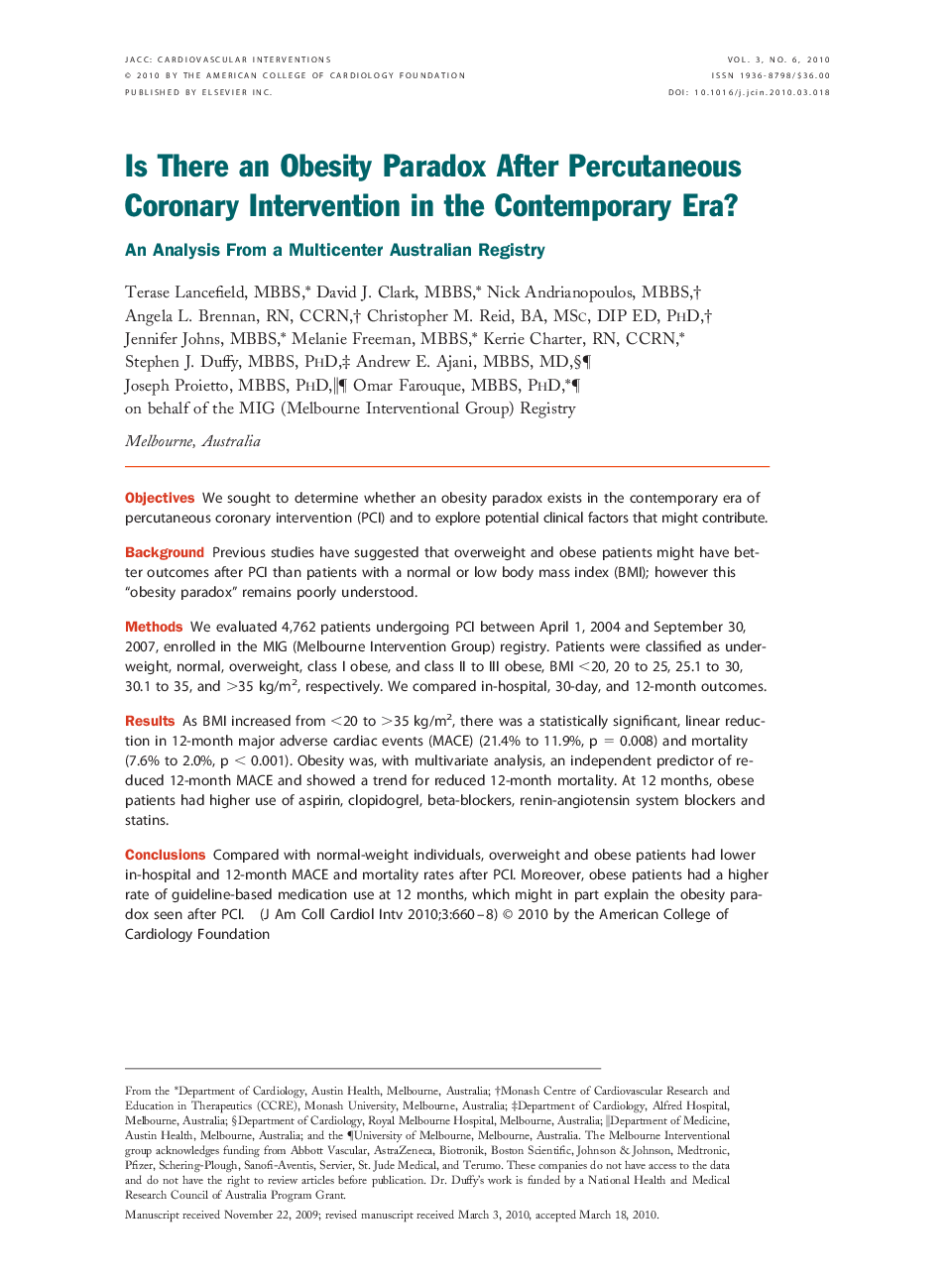| Article ID | Journal | Published Year | Pages | File Type |
|---|---|---|---|---|
| 2941240 | JACC: Cardiovascular Interventions | 2010 | 9 Pages |
ObjectivesWe sought to determine whether an obesity paradox exists in the contemporary era of percutaneous coronary intervention (PCI) and to explore potential clinical factors that might contribute.BackgroundPrevious studies have suggested that overweight and obese patients might have better outcomes after PCI than patients with a normal or low body mass index (BMI); however this “obesity paradox” remains poorly understood.MethodsWe evaluated 4,762 patients undergoing PCI between April 1, 2004 and September 30, 2007, enrolled in the MIG (Melbourne Intervention Group) registry. Patients were classified as underweight, normal, overweight, class I obese, and class II to III obese, BMI <20, 20 to 25, 25.1 to 30, 30.1 to 35, and >35 kg/m2, respectively. We compared in-hospital, 30-day, and 12-month outcomes.ResultsAs BMI increased from <20 to >35 kg/m2, there was a statistically significant, linear reduction in 12-month major adverse cardiac events (MACE) (21.4% to 11.9%, p = 0.008) and mortality (7.6% to 2.0%, p < 0.001). Obesity was, with multivariate analysis, an independent predictor of reduced 12-month MACE and showed a trend for reduced 12-month mortality. At 12 months, obese patients had higher use of aspirin, clopidogrel, beta-blockers, renin-angiotensin system blockers and statins.ConclusionsCompared with normal-weight individuals, overweight and obese patients had lower in-hospital and 12-month MACE and mortality rates after PCI. Moreover, obese patients had a higher rate of guideline-based medication use at 12 months, which might in part explain the obesity paradox seen after PCI.
